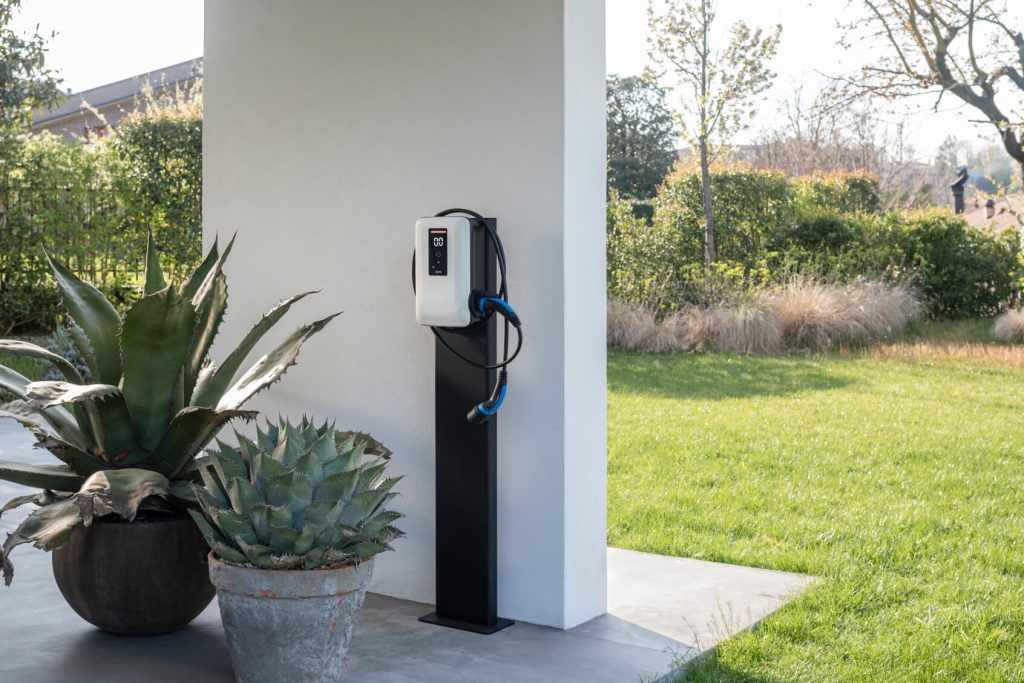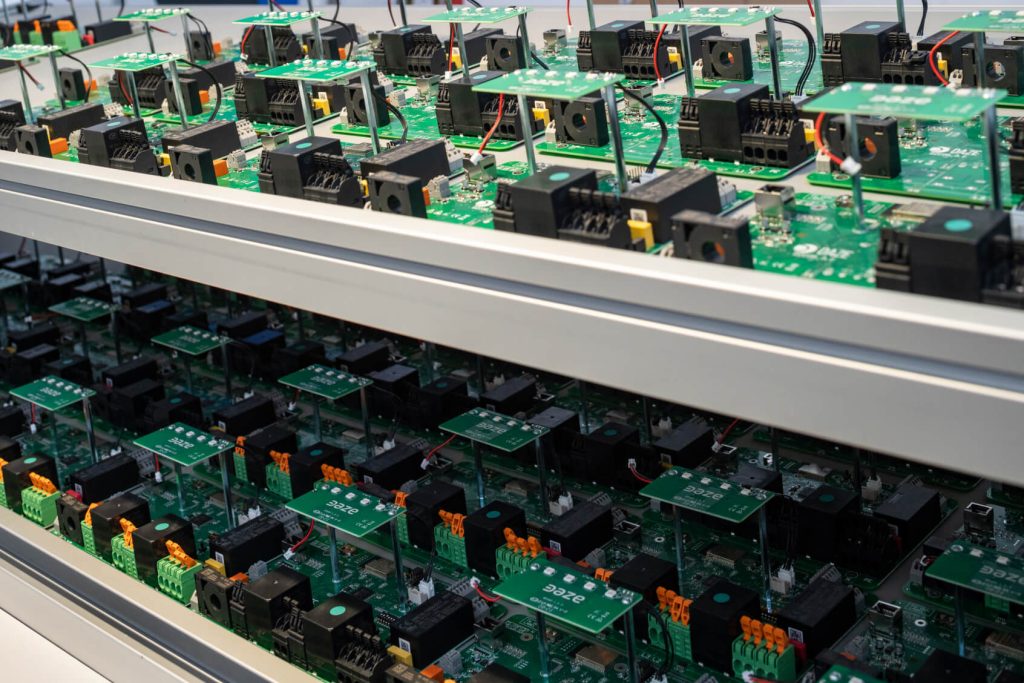Aug 5, 2024
9 questions about wallbox
Find answers to the 9 most common questions about wallboxes, from benefits to installation costs and features.
How many kW are needed to install a wallbox?
The installation of a wallbox requires prior verification on how much power the home system meter can support. For a single-phase wallbox, a power of 3.7 kW to 7.4 kW is required. With a three-phase model, the meter must be able to support a power of up to 22 kW or more in the case of more advanced models. The kilowatts needed for installation depend not only on the electrical system in your home, but also on the electric vehicle and the capacity of the battery pack. For a low-mileage city car (80-90 km per day), a single-phase 3.6 kW wallbox is sufficient, but if the kilometres travelled are increased to 150/180 and the vehicle has 25/30 kWh capacity, it will be preferable to choose a 6 kW wallbox for a more agile and fast charging. With a 75 kWh capacity and an average distance of 290 km full charge, the best solution is a 22 kW three-phase wallbox.
Who installs the wallboxes?
The intervention of a specialist electrician is essential for the correct and safe installation of a home wallbox. For electrical systems above 6 kW, only a qualified professional can provide the drafting of the electrical project, the construction of a dedicated power supply system, state of the art and certification of the electrical installation in accordance with local regulations (Di.Co) and according to the power supply contract. For systems with a power of less than 6 kW, the electrical design is not necessary, but it is always required the presence of a qualified technician to connect the wallbox to the electrical panel and check the compatibility with the technical standard CEI 64-8. In the case of our wallbox, the user and installation manual provides all necessary instructions and precautions.
Daze also thinks about the installation, providing you with the direct contact of a certified technician for all activities related to the installation and support of our wallboxes.
How much does it cost to install a wallbox at home?
The installation costs of a home wallbox must take into account the initial and not negligible investment for the device, with an average economic range, according to data from ARERA (Authority for Energy Networks and Environments), between 700 and 1700 euros for a medium-power device (7.4 kW). The cost is then influenced by the choice of a single-phase or three-phase model. The single-phase wallbox is preferable to avoid, unless specific requirements are met, the high costs of installing a more powerful electrical system. This is not always possible. An electric vehicle with a high battery pack capacity requires a large amount of energy. This value affects the tariff of your home contract, whose cost ranges on average between 0.25 and 0.30 €/kWh. The installation costs are also affected by additional parameters such as distance from the electrical panel, wiring, laying of lines and the possible need for additional fixed costs for a second meter.

Which wallbox is best to choose?
Choosing the wallbox model according to your energy needs and the infrastructural characteristics of your home is essential to enjoy all the advantages of this versatile device. For a complete and accurate choice, several factors must be taken into account, including: compatibility with the vehicle of ownership and with the maximum power manageable by its package-batteries; the power manageable by the home electrical system and the ability of the meter to support an integrated device; the additional and control functions of the wallbox; compatibility with connector types (AC or DC); the costs of the device and installation; the internal or external placement at home. For every need, Daze offers a wide range of wallbox, for private (Dazebox Home T and S) or shared (Dazebox Share T and S), with solutions without the need for installation (Chargy) and with an increasingly fast and efficient service (DazeBox C).
Why install a wallbox?
For an EV driver, installing a home wallbox is convenient. A first advantage is economical, because it allows the consumer to save on the costs of electric charging compared to a supply in a public column. The cost reduction also involves incentives and concessions from electricity suppliers and the choice of a solar or photovoltaic power supply. Unlike low-power charging with a Shucko socket, the wallbox also allows you to charge your vehicle more efficiently and safely, even when other household appliances are in operation, without the risk of overloading the electrical system. The purchase and installation of a home wallbox should be seen as an investment for the future. In the event of a sale of your home, in fact, the presence of an electric charging device already installed in the garage or in a condominium parking increases the value of the property. Not least of importance is the eco-sustainable contribution and the incentive to the electric transition from one’s own home.
What are the advantages of a wallbox?
The wallbox for your home is a profitable investment in comfort, versatility, safety, convenience and above all sustainability. A device of this type allows a total autonomy of charging the electric vehicle in the garage or in the parking lot, with the possibility to monitor the state of the refueling, check the times and blocking functions and manage users who have access to them through the Daze App. With the modulation of different powers, the wallbox adapts to the capacity of the battery pack of each electric vehicle and every need for charging, ensuring an optimized electrical supply and in total safety. Thanks to state incentives, installing a home wallbox is becoming cheaper, with a saving of almost half on the charging costs at public booths. It is also possible to guarantee a safe and secure private place for your electric vehicle, even for many hours, avoiding the dreaded range anxiety when traveling. With a functional and aesthetically pleasing design, wallboxes become a pleasant part of your home.

What does it take to install a wallbox?
The installation of a wallbox requires first the intervention of an authorized professional to connect the wallbox to the electrical system and issue the certificate of conformity according to the applicable safety regulations. Having a standard electrical system is therefore the first requirement for installing a wallbox, so as to ensure safe charging. In the case of installation in a condominium, you must then check the appropriate permissions. Since the installation of a wallbox may involve changes to the electrical system and the Civil Code requires to decide on the establishment of a fund for extraordinary maintenance works, it is mandatory to notify the administrator and convene the general meeting to vote on it. In case of a favourable vote, the installation costs will be divided between the apartment buildings with an electric vehicle. With the majority of votes against, the expenses will be borne by the applicant alone, provided that it does not damage the condominium infrastructure and does not hinder circulation in common spaces.
Where can you buy a wallbox?
If you want to install a wallbox, but do not know where to buy it, we offer the possibility of buying directly from our online store. The presentation of each product includes: description of the device and its functions, technical details and photographs that place the wallbox in a home context. The online order guarantees a secure transaction, shipping home in 3-5 working days, 2 year insurance coverage and a service tailored to your refill needs, thanks to specific questions that precede the purchase. In addition, Daze guarantees dedicated technical assistance and the possibility of using a specialized technician from the company for an inspection. You can also buy additional accessories such as cables, DPM and protections in the store.
How do wallboxes work?
Unlike public charging stations, wallbox are perfect for private or residential electrical supply. They are installed on the wall comfortably at home and allow the owner of an electric vehicle immediate access to charging. The wallbox transforms a normal power outlet into a charging point, modulating the amount of electrical energy released by the system according to the capacity of the battery pack of the vehicle. The process is carried out by a coding system (PMW) of the wallbox, which optimizes the operation of the device and allows the vehicle to absorb the maximum power allowed. The wallbox is therefore a flexible and intelligent solution, which allows you to control and program the charging, even remotely, in order to manage the supply on the basis of your own energy tariff and maximize the operation.
Purchase your EV Charger
Our expert will contact you to offer you the most suitable solution for you.
